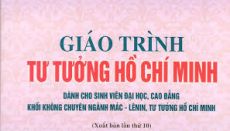140 câu trắc nghiệm Kinh tế lượng
tracnghiem.net tổng hợp và chia sẻ đến các bạn 100+ câu hỏi trắc nghiệm Kinh tế lượng - có đáp án, bao gồm các quy trình về thủ tục hải quan, khai thủ tục hải quan, chứng từ khai hải quan,... Hi vọng sẽ trở thành nguồn tài liệu bổ ích giúp các bạn học tập và nghiên cứu về môn học một cách tốt nhất. Để ôn tập hiệu quả các bạn có thể ôn theo từng phần trong bộ câu hỏi này bằng cách trả lời các câu hỏi và xem lại đáp án và lời giải chi tiết. Sau đó các bạn hãy chọn mục "Thi thử" để hệ thống lại kiến thức đã ôn. Chúc các bạn thành công với bộ đề "Cực Hot" này nhé.
Chọn hình thức trắc nghiệm (20 câu/30 phút)
Chọn phần
-
Câu 1:
The numerical score assigned to the credit rating of a bond is best described as what type of number?
A. Continuous
B. Cardinal
C. Ordinal
D. Nominal
-
Câu 2:
Suppose that we wanted to sum the 2007 returns on ten shares to calculate the return on a portfolio over that year. What method of calculating the individual stock returns would enable us to do this?
A. Simple
B. Continuously compounded
C. Neither approach would allow us to do this validly
D. Either approach could be used and they would both give the same portfolio return
-
Câu 3:
What result is proved by the Gauss-Markov theorem?
A. That OLS gives unbiased coefficient estimates
B. That OLS gives minimum variance coefficient estimates
C. That OLS gives minimum variance coefficient estimates only among the class of linear unbiased estimators
D. That OLS ensures that the errors are distributed normally
-
Câu 4:
The type I error associated with testing a hypothesis is equal to:
A. One minus the type II error
B. The confidence level
C. The size of the test
D. The size of the sample
-
Câu 5:
Which of the following is a correct interpretation of a “95% confidence interval” for a regression parameter?
A. We are 95% sure that the interval contains the true value of the parameter
B. We are 95% sure that our estimate of the coefficient is correct
C. We are 95% sure that the interval contains our estimate of the coefficient
D. In repeated samples, we would derive the same estimate for the coefficient 95% of the time
-
Câu 6:
Which of the following statements is correct concerning the conditions required for OLS to be a usable estimation technique?
A. The model must be linear in the parameters
B. The model must be linear in the variables
C. The model must be linear in the variables and the parameters
D. The model must be linear in the residuals
-
Câu 7:
Which of the following is NOT a good reason for including a disturbance term in a regression equation?
A. It captures omitted determinants of the dependent variable
B. To allow for the non-zero mean of the dependent variable
C. To allow for errors in the measurement of the dependent variable
D. To allow for random influences on the dependent variable
-
Câu 8:
Which of the following is NOT correct with regard to the p-value attached to a test statistic?
A. p-values can only be used for two-sided tests
B. It is the marginal significance level where we would be indifferent between rejecting and not rejecting the null hypothesis
C. It is the exact significance level for the test
D. Given the p-value, we can make inferences without referring to statistical tables
-
Câu 9:
Which one of the following is NOT an assumption of the classical linear regression model?
A. The explanatory variables are uncorrelated with the error terms
B. The disturbance terms have zero mean
C. The dependent variable is not correlated with the disturbance terms
D. The disturbance terms are independent of one another
-
Câu 10:
Which of the following is the most accurate definition of the term “the OLS estimator”?
A. It comprises the numerical values obtained from OLS estimation
B. It is a formula that, when applied to the data, will yield the parameter estimates
C. It is equivalent to the term “the OLS estimate”
D. It is a collection of all of the data used to estimate a linear regression model.
-
Câu 11:
Two researchers have identical models, data, coefficients and standard error estimates. They test the same hypothesis using a two-sided alternative, but researcher 1 uses a 5% size of test while researcher 2 uses a 10% test. Which one of the following statements is correct?
A. Researcher 2 will use a larger critical value from the t-tables
B. Researcher 2 will have a higher probability of type I error
C. Researcher 1 will be more likely to reject the null hypothesis
D. Both researchers will always reach the same conclusion
-
Câu 12:
Consider an increase in the size of the test used to examine a hypothesis from 5% to 10%. Which one of the following would be an implication?
A. The probability of a Type I error is increased
B. The probability of a Type II error is increased
C. The rejection criterion has become more strict
D. The null hypothesis will be rejected less often
-
Câu 13:
What is the relationship, if any, between the normal and t-distributions?
A. A t-distribution with zero degrees of freedom is a normal
B. A t-distribution with one degree of freedom is a normal
C. A t-distribution with infinite degrees of freedom is a normal
D. There is no relationship between the two distributions
-
Câu 14:
Consider a standard normally distributed variable, a t-distributed variable with d degrees of freedom, and an F-distributed variable with (1, d) degrees of freedom. Which of the following statements is FALSE?
A. The standard normal is a special case of the t-distribution, the square of which is a special case of the F-distribution
B. Since the three distributions are related, the 5% critical values from each will be the same
C. Asymptotically, a given test conducted using any of the three distributions will lead to the same conclusion
D. The normal and t- distributions are symmetric about zero while the F- takes only positive values
-
Câu 15:
Which of the following is the correct value for?
A. 2.89
B. 1.30
C. 0.84
D. We cannot determine the value of from the information given in the question
-
Câu 16:
What is the relationship, if any, between t-distributed and F-distributed random variables?
A. A t-variate with z degrees of freedom is also an F(1, z)
B. The square of a t-variate with z degrees of freedom is also an F(1, z)
C. A t-variate with z degrees of freedom is also an F(z, 1)
D. There is no relationship between the two distributions
-
Câu 17:
Which of the following would NOT be a potential remedy for the problem of multicollinearity between regressors?
A. Removing one of the explanatory variables
B. Transforming the data into logarithms
C. Transforming two of the explanatory variables into ratios
D. Collecting higher frequency data on all of the variables
-
Câu 18:
The value of the Durbin Watson test statistic in a regression with 4 regressors (including the constant term) estimated on 100 observations is 3.6. What might we suggest from this?
A. The residuals are positively autocorrelated
B. The residuals are negatively autocorrelated
C. There is no autocorrelation in the residuals
D. The test statistic has fallen in the intermediate region
-
Câu 19:
Which of the following is NOT a good reason for including lagged variables in a regression?
A. Slow response of the dependent variable to changes in the independent variables
B. Over-reactions of the dependent variables
C. The dependent variable is a centred moving average of the past 4 values of the series
D. The residuals of the model appear to be non-normal
-
Câu 20:
Which of the following would you expect to be a problem associated with adding lagged values of the dependent variable into a regression equation?
A. The assumption that the regressors are non-stochastic is violated
B. A model with many lags may lead to residual non-normality
C. Adding lags may induce multicollinearity with current values of variables
D. The standard errors of the coefficients will fall as a result of adding more explanatory variables

















